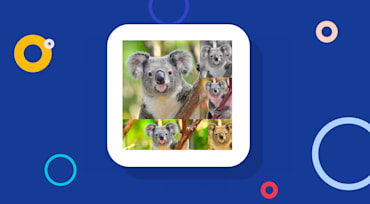Update - April 2016: The add-on described in this post is no longer available since ReKognition terminated their services. However, all features described here are still available via a different and even better add-on by Microsoft. See Facial attribute detection with Microsoft's Face API and the Advanced facial attributes detection add-on documentation.
Social networking sites allow users to upload images or other types of files that are immediately available to other users via news feeds or notifications. In some cases, attackers can directly spread infected files, but more commonly, they leverage the viral effect and the fact that users are simply unaware that their files are infected through sharing and collaborating with others. As a site owner or application developer, it is your responsibility to protect users and prevent these situations from occurring. Fortunately, Cloudinary makes this easier with its Metascan add-on.

Update - December 2015: The add-on described in this post is no longer available since ReKognition terminated their services. However, all features described here are still available via a different and even better add-on: Advanced Facial Attributes Detection

It is common for e-commerce, media, and news sites to remove image backgrounds or make them transparent in order to place the main element of the image on either white or color backgrounds. The final result better integrates an image into a site or specific page’s graphic design. For example, a fashion site that presents clothes or shoes should have the main element of a photo (e.g. shoes) extracted from the original image background, then edited to fit the site’s catalogue design and structure.

Front end developers may want to combine multiple images into a single image. For example, when creating and adding watermarks to stock photos, adding shapes or badges, preparing content for print (e.g. placing a logo on a t-shirt or a mug), adding a caption, and so on.

Image URLs tend to appear as a long list of random characters that are not intended for viewers and are not very useful to search engines. Concise and meaningful image file names are better for search engines to extract information about an image, therefore supporting your site's SEO ranking.

Photos today can be easily edited by means of resizing, cropping, adjusting the contrast, or changing an image’s format. As a result, new images are created that are similar to the original ones. Websites, web applications and mobile apps that allow user generated content uploads can benefit from identifying similar images.

Cloudinary offers you a comprehensive online interface that allows you to arrange and manage your image assets. With Cloudinary’s Media Library, you can easily view, upload, moderate, and search through your images. We recently enhanced this web interface with a new feature that allows you to instantly view semantic image data (descriptive image metadata), that is automatically extracted from your images.

Here at Cloudinary, we always strive to develop the best possible product, answer as many of our customers' needs and offer a superb support. Since launching 3 years ago we worked tirelessly to build the technology that empowers the Cloudinary product and supports our customers. While doing so, we haven’t really given a lot of love to our website design.

